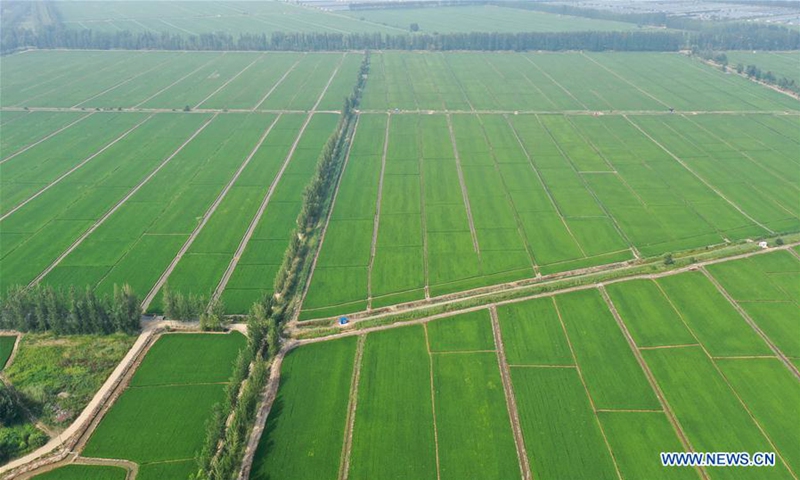World food prices reach highest level since February
Source: Xinhua Published: 2020/9/4 11:20:33

Aerial photo taken on July 21, 2020 shows rice fields at Hujia Town of Panjin City, northeast China's Liaoning Province. Panjin City has not only China's high-quality rice production base, but north China's larger river crab artificial incubation and breeding base. The city has developed a rice-crab commensal eco-agriculture mode that river crabs are bred in growing rice. This mode has created a new method for farmers planting rice to increase incomes. (Xinhua/Yao Jianfeng)
World food prices in August rose to the highest level since February, due to a "firmer demand" for grains, cereals, vegetable oils and sugar, as well as a "weaker U.S. dollar," the Food and Agriculture Organization (FAO) of the United Nations reported Thursday.
The broad FAO World Food Price Index gained 2.0 percent, following gains of 1.2 percent and 2.4 percent in July and June, respectively. The combined gains since June were enough to nearly cancel out falling prices over the first five months of the year.
FAO said the index is 2.2 percent above its level a year earlier.
Unlike the previous two months, prices for grains and cereals rose, gaining 1.9 percent compared to July. Rice and corn prices were among the biggest gainers, with rice prices pushed higher by a seasonal dip in production and increased demand from Africa, while corn prices climbed due to lower supply from farmers in the United States.
The vegetable oil index rose by 5.9 percent on the heels of a 7.6-percent gain in July and an 11.3-percent increase in June.
Sugar prices also climbed, gaining 6.7 percent in August, with higher demand from China and Europe and falling production in Thailand, the world's second-leading sugar exporter, listed as major factors by FAO.
The monthly FAO Food Price Index is based on worldwide prices for 23 food commodity categories covering prices for 73 different products compared to a baseline year.
Posted in: INDUSTRIES,MARKETS